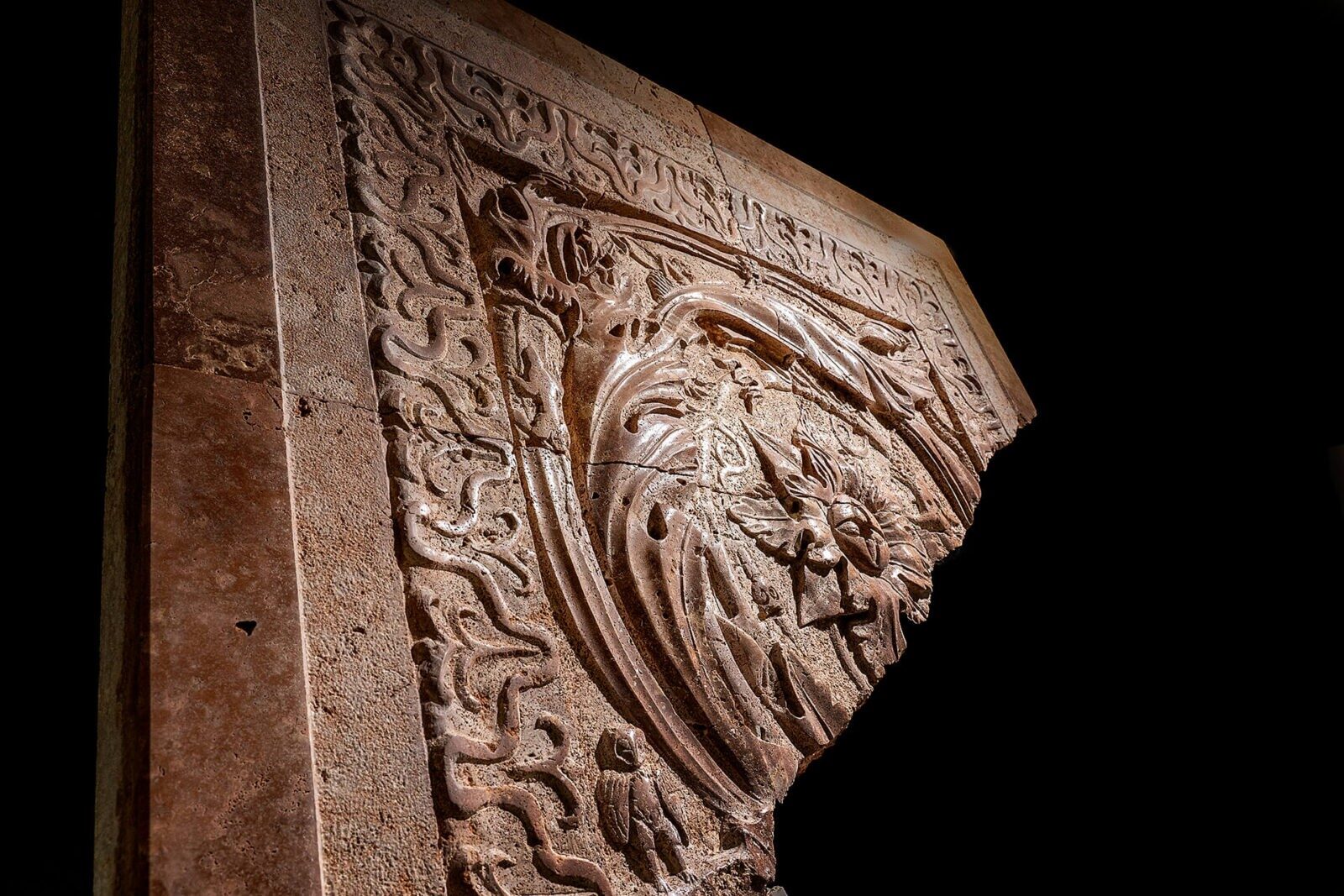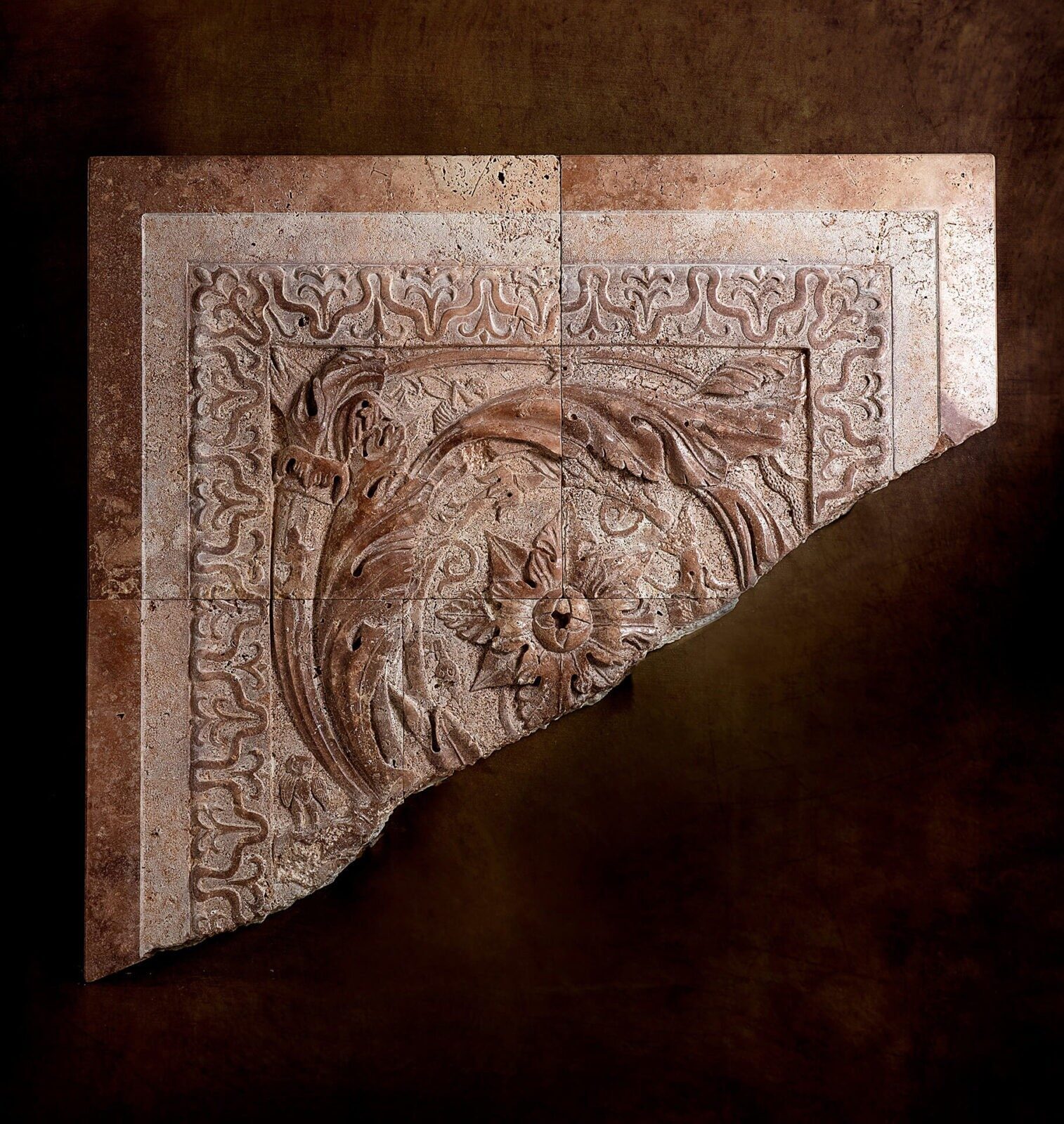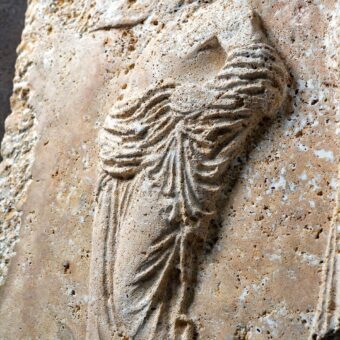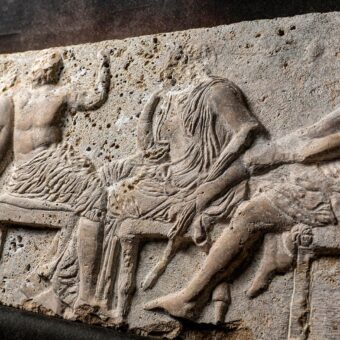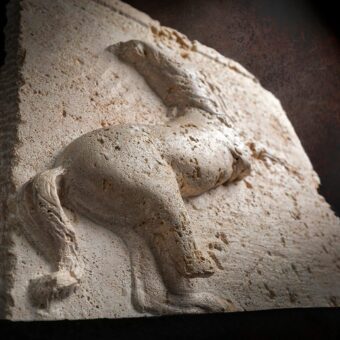COMPOSITE FRAGMENT OF CHIRAGAN
REPRODUCTION OF A PILASTER FRAGMENT IN THE SAINT-RAYMOND MUSEUM, TOULOSE.
It is displayed on one of the top floors in the Saint-Raymond Museum. It is carved in marble coming from a roman village known as Chiragan and which was occupied between the first and the fourth century A.D.
| DIMENSIONS | 104 CM (W), 95 CM (H), 6’5 CM (D) |
|---|---|
| MATERIAL | TRAVERTINE CRON |
| DELIVERY TIMES: | 50- 60 DAYS |
It is displayed on one of the top floors in the Saint-Raymond Museum. It is carved in marble coming from a roman village known as Chiragan and which was occupied between the first and the fourth century A.D. Although its citiziens had a clear vocation for farming, the village was also the owner's residence, where he could show his wealth and culture not only through the architecture but also through a painted and sumptuous carving decoration.
The museum is located in Toulouse which was the old roman province of narbonense. It is dedicated to the Gallic-Roman and it is here we can find this piece. Hundreds of marble floors in different shapes show the wealth we talk about. Fragments of pilasters or doorjambs are featured by the dense foliage composed of acanthus leaves. By looking at them carefully, several insects and small animals can be distinguished. We can spot a bird, a lizard, a snail and a cricket mixed with a spiral. The studios which they come from may have an oriental background or be linked to aesthetic influences from Asia Minor.





